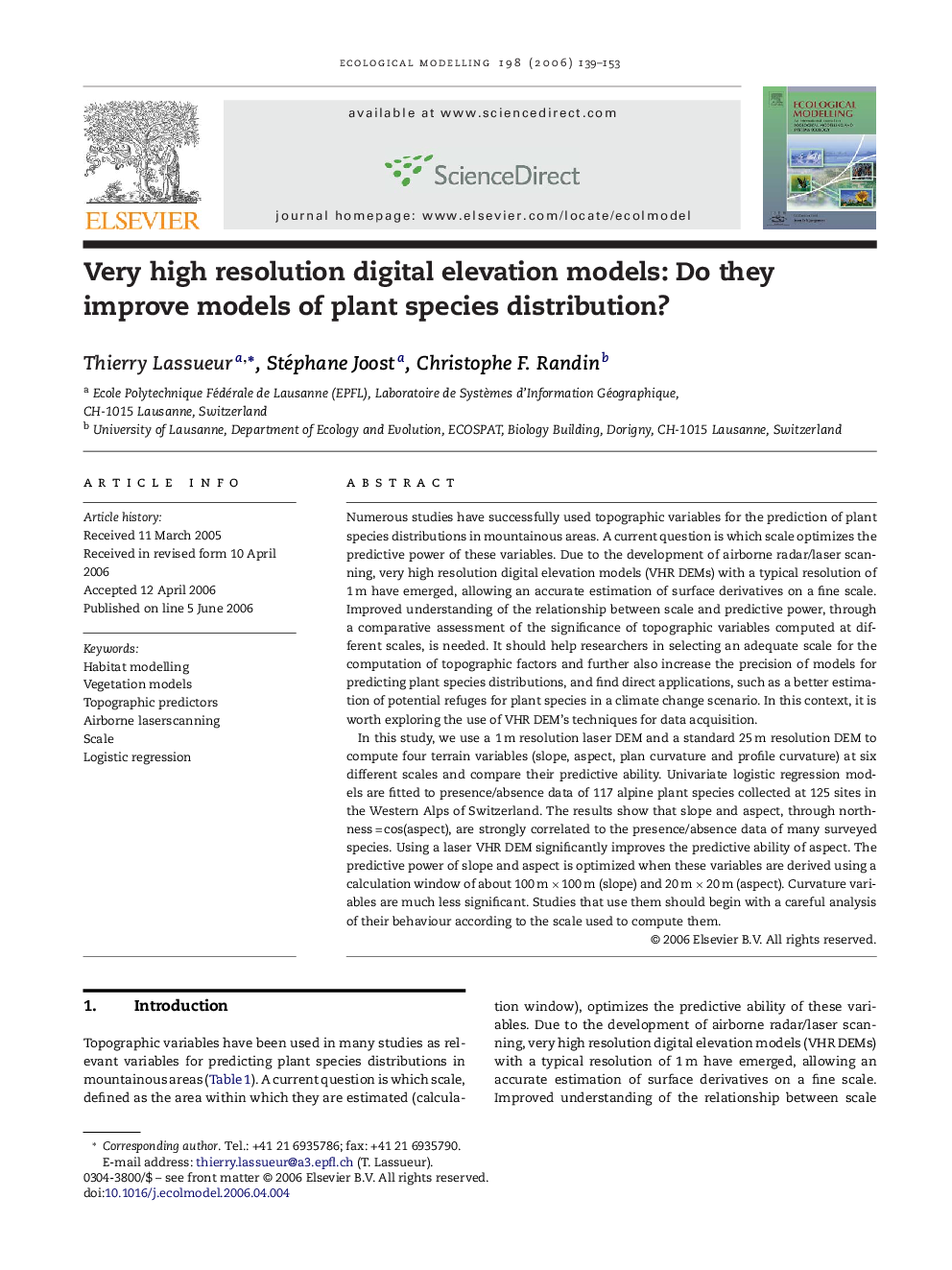| Article ID | Journal | Published Year | Pages | File Type |
|---|---|---|---|---|
| 4378842 | Ecological Modelling | 2006 | 15 Pages |
Numerous studies have successfully used topographic variables for the prediction of plant species distributions in mountainous areas. A current question is which scale optimizes the predictive power of these variables. Due to the development of airborne radar/laser scanning, very high resolution digital elevation models (VHR DEMs) with a typical resolution of 1 m have emerged, allowing an accurate estimation of surface derivatives on a fine scale. Improved understanding of the relationship between scale and predictive power, through a comparative assessment of the significance of topographic variables computed at different scales, is needed. It should help researchers in selecting an adequate scale for the computation of topographic factors and further also increase the precision of models for predicting plant species distributions, and find direct applications, such as a better estimation of potential refuges for plant species in a climate change scenario. In this context, it is worth exploring the use of VHR DEM's techniques for data acquisition.In this study, we use a 1 m resolution laser DEM and a standard 25 m resolution DEM to compute four terrain variables (slope, aspect, plan curvature and profile curvature) at six different scales and compare their predictive ability. Univariate logistic regression models are fitted to presence/absence data of 117 alpine plant species collected at 125 sites in the Western Alps of Switzerland. The results show that slope and aspect, through northness = cos(aspect), are strongly correlated to the presence/absence data of many surveyed species. Using a laser VHR DEM significantly improves the predictive ability of aspect. The predictive power of slope and aspect is optimized when these variables are derived using a calculation window of about 100 m × 100 m (slope) and 20 m × 20 m (aspect). Curvature variables are much less significant. Studies that use them should begin with a careful analysis of their behaviour according to the scale used to compute them.
